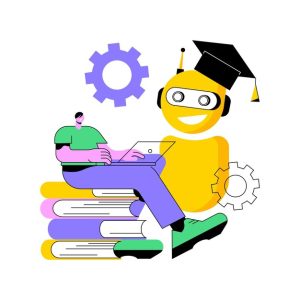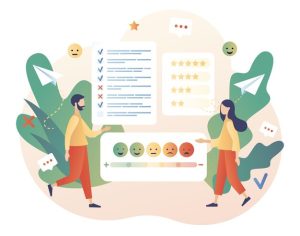Introduction By means of this thorough guidebook, we shall interpret the methods undertaken by OpenAI for crafting ChatGPT. For creating specialized intelligent bots, we will follow these steps while utilizing GPT-2 as our preferred language model. To train and optimize a closed-domain single turn question answering bot, we will make use of reinforcement learning in
Introduction
By means of this thorough guidebook, we shall interpret the methods undertaken by OpenAI for crafting ChatGPT. For creating specialized intelligent bots, we will follow these steps while utilizing GPT-2 as our preferred language model. To train and optimize a closed-domain single turn question answering bot, we will make use of reinforcement learning in AWS SageMaker. Throughout this article, you will gain knowledge about important ideas including RLHF, PPO, prompts for learning and prompt engineering, Kullback-Leibler (KL) divergence, and more. Examples and Jupyter notebooks that are practical will be provided by us For supporting your venture in creating an intelligent bot application on AWS.
The Rise of ChatGPT
n November 2022, OpenAI introduced ChatGPT as a highly advanced Large Language Model (LLM) developed by OpenAI and It was released during the month of November in 2022. The model gained massive popularity, attaining one million users in just five days. By January 2023, it also achieved the milestone of having 100 million monthly users., as per the evaluations made by UBS analysts. ChatGPT is Created with a basis in the GPT-3 series model. Involving explicit instructions during the training process, it adopts a similar training approach as InstructGPT.

Image by: https://truegazette.com/
Understanding Reinforcement Learning
Before diving into building our bot, let’s obtain a rudimentary comprehension of reinforcement learning (RL). The agent is responsible for making decisions, The environment gives feedback through rewards or penalties. Within our specific scenario, we aim to investigate the potential applications of RL in language models and assignments centered around interpreting natural language.

Image by: https://truegazette.com/
Building a FAQ Bot with GPT-2
Creating an AI Chatbot for Answering Common Questions taking advantage of GPT-2
Our attention in this part will be directed towards constructing a chatbot that specializes in answering queries within a specific field, utilizing GPT-2 as the foundation for our language model. Differing from open-domain chatbots, Our FAQ bot’s main objective is to provide precise responses within a closed domain, in our case, related to COVID-19.

Image by: https://truegazette.com/
Step 1: Self-Supervised Pre-Training
For the commencement of our bot-building exercise, we will commence by pre-training the GPT-2 model on news articles related to COVID-19. We will utilize SageMaker Processing and SageMaker Distributed Training for this pre-training pipeline. Our custom GPT-2 model’s foundation will be built upon by undertaking this crucial step, Designed specifically to cater to the demands of our particular domain.

Image by: https://truegazette.com/
Step 2: Supervised Fine-Tuning (SFT)
Now that we have our tailor-made GPT-2 model, the following action involves optimizing its performance in providing accurate responses to commonly asked questions about COVID-19 through training with a dataset focused on this subject We will Conduct prompt-based learning with the aim of templating and tokenizing the QA pairs, Ensuring they are properly prepared before entering into a program of supervised fine-tuning. This step ensures that our bot becomes aligned for quality and generates responses that adhere to human-preferred closeness.
Image by: https://truegazette.com/
Step 3: Human Feedback
The quality and coherence of our bot’s responses depend on human feedback. Our approach involves simulating human labeling and use a variant model along with our SFT model to generate responses. Human labelers will provide their preference ratings for these responses, helping us identify the best answers for each prompt.
Image by: https://truegazette.com/
Step 4: Building the Reward Preference Model (RPM)
To score the quality of our bot’s responses, we plan on developing a reward preference model (RPM). The RPM will output scalar reward scores based on prompt-response pairs. The RPM will be trained using a BERT-base model with a classification head, leveraging the power of pre-trained language models to evaluate response quality.

Image by: https://truegazette.com/
Step 5: Reinforcement Learning from Human Feedback (RLHF)
The final step involves utilizing the SFT and RPM models to train a reinforcement learning (RL) policy that optimizes based on the reward model. RLHF greatly depends on Proximal Policy Optimization (PPO) and KL divergence. Giving the model the capability to optimize for human preferences results in more precise and beneficial responses.

Image by: https://truegazette.com/
Conclusion
By implementing the instructions in this specialized manual, you will develop a strong grasp of constructing industry-specific smart chatbots employing GPT and reinforcement learning on AWS SageMaker. With the inclusive steps provided and real-life illustrations, you can develop your very own intelligent bot application that suits your unique domain requirements. Embrace the power of language models and advance your conversational AI applications to new heights.

















Leave a Comment
Your email address will not be published. Required fields are marked with *